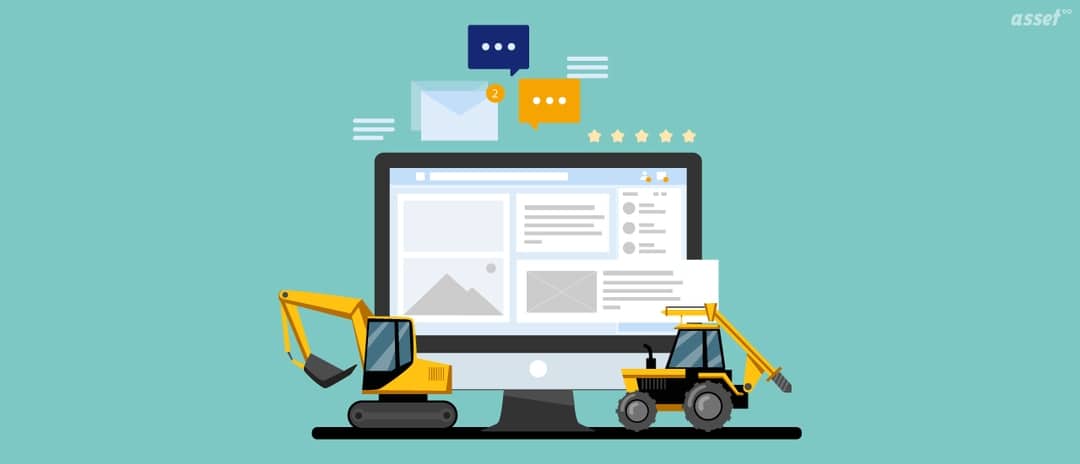
Equipment Management For Sustainable Achievement
Industry participants face both opportunities and challenges in the constantly changing construction equipment (CE) market, where change is constant. The digital revolution that has swept through the construction industry has altered procedures, providing an opportunity for companies to adjust and flourish over the long haul. In order to stay ahead of these dynamics, you need to understand how original equipment manufacturers (OEMs), dealers, fleet owners, and rental companies are navigating this ever-changing landscape. Also, you must know how a co-equipment management strategy can be the key to achieving common objectives, enhancing output, and driving success in the CE sector.
Recognizing the Present Market Situation
The CE market is complex, with multiple players pursuing different goals. OEMs, dealers, fleet owners, and rental agencies all have different priorities and challenges to address. All stakeholders, however, face comparable difficulties when the construction equipment they depend on meets problems with maintenance, performance, or productivity.
Problems to address
The problem is that every brand and kind of equipment frequently has a unique platform where telematics data and other important information are stored. Problems can quickly spiral out of control if equipment stakeholders do not have easy access to and evaluation of this data. Fleet owners are not getting the visibility they require to run their businesses effectively, and dealers, rental companies, and OEMs are finding it difficult to provide excellent customer experiences.
Goals to Achieve
All of these stakeholders have common long-term goals, which is a bright spot in the situation. Every participant in the CE sector wants their tech stacks to function more efficiently, their partner relationships to run more smoothly, and their future-focused capabilities to help them meet and surpass their KPIs. These are the exact advantages that a co-equipment management strategy can provide.
Most Impacted Sectors
You need to understand as well which sectors are going to face difficulty in this evolving industry and how much they will have to pay off if they fail to make a better strategy.
-
Local Equipment Dealers
Dealers are in a difficult position because they are frequently viewed as the go-between for manufacturers and consumers. When it comes to utilizing digital resources and providing cutting-edge services that meet their client’s changing needs, many are still catching up. Heavy equipment suppliers want to expand their product support businesses as the CE industry goes more digital and customers want better services and higher productivity. Value-added services allow dealers to create new revenue streams in addition to maintaining their competitiveness.
-
Equipment Rental Companies
The market for renting out construction equipment is likely to grow at a Compound Annual Growth Rate (CAGR) of 4% between 2023 and 2032. This increase is the result of rental agreements including on-site maintenance, repairs, and replacements, which lower renters’ expenses. Furthermore, renting has become a more appealing option due to the rising cost of owning and purchasing equipment.
The focus of rental companies is changing as they grow, moving away from equipment rentals. In order to generate additional revenue streams, they are currently looking into opportunities to offer equipment management services for machines that their clients own and rent.
-
Equipment Manufacturers
After the pandemic, the CE market is undergoing substantial changes. Market research indicates that between 40 and 45 percent of the industry’s value will be split among various players in the coming years. OEMs are responding by accelerating digitization initiatives, improving dealer network performance, and implementing demand-forecasting models to more accurately expect shifts in the market and potential interruptions.
-
Fleet Managers
In order to meet the demands of their ongoing and future projects, fleet owners face particular challenges in managing a wide variety of equipment types and brands. Fleet owners come under increasing pressure if they do not implement right solutions. Fleet managers are responsible for making sure that machinery is in good working order by completing equipment requirements and responding quickly to problems that field operators report.
Co-Equipment Administration
Even though every stakeholder group may have different priorities, they all have the same goals in mind. All stakeholders in the CE management sector aim to achieve optimal uptime, enhanced efficiency, optimized workflows, and heightened system visibility. Furthermore, increasing revenue and future-proofing their operations are their ultimate goal.
This common objective opens the door for a co-equipment management strategy. Co-equipment management is a collaborative effort among dealers, rental companies, OEMs, and fleet owners to manage the equipment lifecycle, with the ultimate goal of increasing production, performance, and uptime.
The best thing about this strategy is that companies do not have to drastically alter or upset their current IT stacks. Whereas a modern operating system is necessary to connect different solutions and establish linkages between useful apps, including communication platforms, business systems, and telematics, that may not have previously been integrated.
Co-equipment management enables all parties including dealers, rental companies, OEMs, and fleet owners, to manage daily tasks more effectively and communicate seamlessly through a single interface, despite the fact that opportunities and challenges in the CE market are specific to each stakeholder.
Final Verdict
There is a standard shift taking place in the construction equipment market, and those who can adjust to this new environment will be well-positioned for success in the digitally-driven future. All parties involved can collaborate to increase productivity, maximize uptime, and optimize performance by implementing a co-equipment management strategy. In the CE industry, embracing the transformative power of technology and collaboration is the first step towards achieving long-term success.


